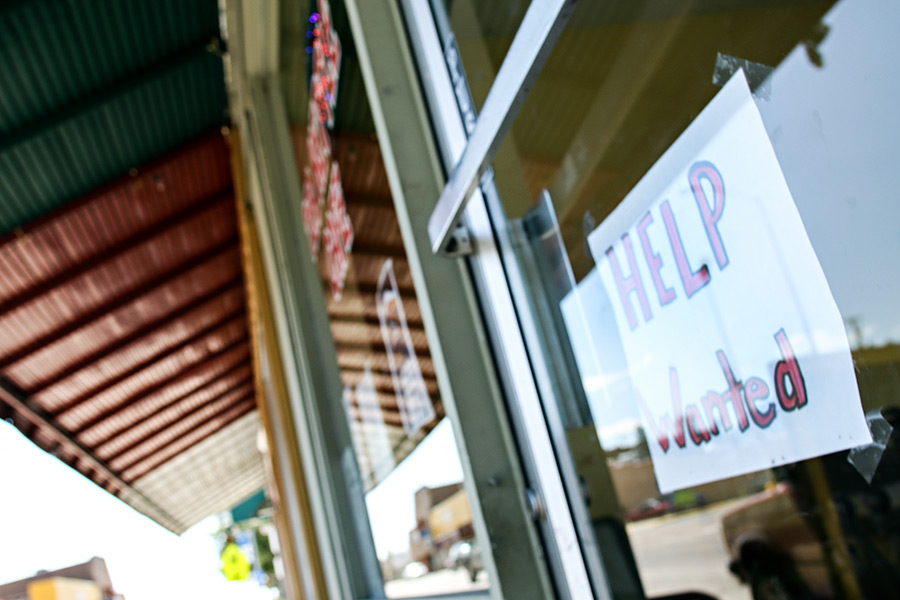As Montanans continue to catch their breath in the wake of the recession, state economists see a new, pressing issue heading to Big Sky Country: virtually no unemployment within the next decade.
“For several years we’ve heard people talking about the skills shortage (when it comes to unemployment),” Barb Wagner, chief economist at the state Department of Labor and Industry, said. “This goes a step further. There’s just not going to be enough people.”
That’s just one of multiple conclusions reached in the 2015 Labor Day Report from DLI, an annual report on the current state of Montana’s economy and projections for the future.
This year’s report, released on Aug. 31, touts strong economic growth across the state despite challenges, such as slowed oil-well exploration and the decline in oil prices affecting employment in the eastern part of the state.
At first blush, the news is optimistic: Montana had the sixth-fastest wage growth in the country in the past five- and 10-year timeframes; wages across the state increased by 3.5 percent over the last year to an average of $38,874; personal income rose by 4 percent in the last year, mirroring a 4 percent unemployment rate.
But economic growth presents its own set of problems, according to DLI. Baby Boomers are expected to retire in droves within the next decade, totaling about 130,000, while there are only about 123,000 Montanans aged 16 to 24, and not all of these residents will choose to enter the labor force here.
The state is expected to add 7,800 jobs in 2015 and 2016, following up with projections for nearly 6,000 jobs added each year from 2017 to 2024, with health care expected to have the highest demands at 1,300 jobs per year through 2024. Construction and mining jobs should hold steady, the economists wrote, and professional and technical services are likely to skyrocket.
Economists predict the state will add 4,100 workers per year. Even with migration bringing other workers to the state, Montana’s unemployment rate is expected to hit 1 percent to 2 percent in the next 10 years.
“It’s something that has never really happened before in the past,” Wagner said. “When we talk about economic development, it’s usually about capital and trying to bring more money into the market. But it’s a whole different challenge when labor is the constraint.”
The Labor Day Report projections are just that: potential outcomes for the state based on economic and U.S. Census data, Wagner noted. There could be surprises in the next five years, she said, but this was an issue the DLI was watching even before the recession.
“There just aren’t enough people,” Wagner said. “The recession pushed off this critical time for another five years.”
Worker retention will play a major role, and this could include higher wages, benefits, and closing the gender wage gap to fully access the female work force, Wagner said, and workers’ skills will also have to stay sharp and current.
At the Small Business Administration, a federal entity with offices in the state whose employees help small businesses access and use existing economic tools to their advantage, district director Wayne Gardella said job creation is “always good,” but he would like to see more earnings growth through businesses such as manufacturing and trade.
“I want to see Montanans getting into businesses that are higher value so the employees have higher wages,” Gardella said.
The SBA has taken particular interest in the northwest corner of the state, which has taken longer to bounce back in employment. The DLI report notes that Northwest Montana is gaining strength with “respectable” job growth in the last three years, but this corner of the state still holds the highest levels of unemployment, at an average of 6 percent in all the counties.
As of July, Glacier County sat at 9.5 percent unemployment, Lincoln County at 8.5 percent, and Sanders County at 7.2 percent, the three highest rates in the state.
The SBA dispatched former Kalispell mayor and former Columbia Falls city manager Roger Hopkins, the current deputy director at SBA in Montana, to be stationed in Columbia Falls and focus on the northwest region.
Hopkins said he believes the northwest corner has the entrepreneurs and can-do spirit to tackle the remaining unemployment issues, now that previous major industries, such as those in natural resources, are slowing.
“The creativity that abounds and the willingness of people to stay and make something happen even during what were some of the darkest time anywhere in the state in the last few years is stunning, and I think it bodes well for the future of the area,” Hopkins said.
He said the type of entrepreneurial energy in the Flathead would do well to spread to Sanders, Lincoln, and Glacier counties, and his role will be to help introduce such business owners to helpful tools, such as aid in the export process or financing.
Former dominant industries such as timber could make a comeback through technological innovations, Hopkins said, like the work being done at Columbia Falls-based SmartLam, which adds value to wood products.
“Manufacturing and the outcropping of small manufacturers in the valley is remarkable,” Hopkins said. “That gets back to the entrepreneurial spirit. It says, ‘I want to live here,’ and people are bringing skills and experience from other parts of the country.”
